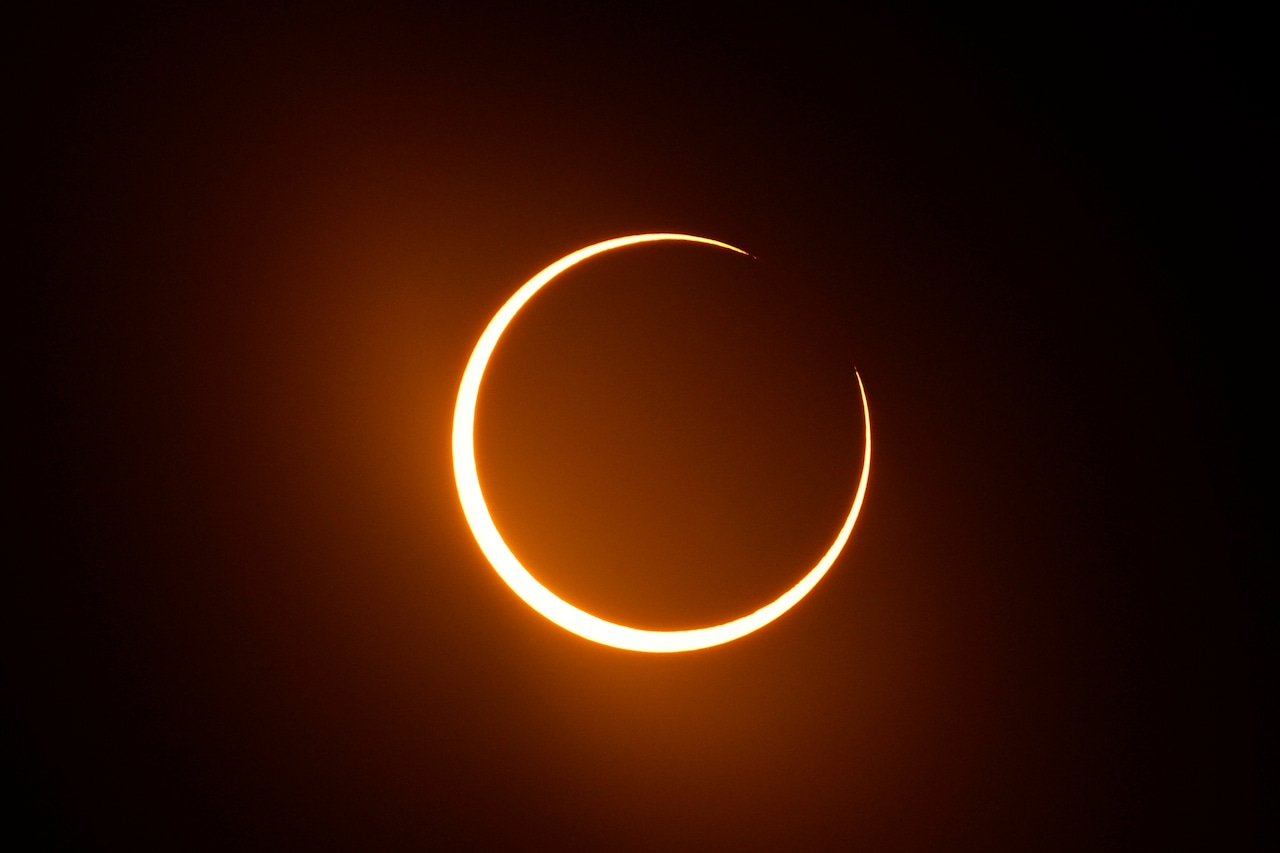
The last solar eclipse of 2024 — expected to appear like a “Ring of Fire” in the sky — is only hours away.
On Wednesday, an annular solar eclipse is expected to be seen in the skies above, according to NASA. Annular solar eclipses happen when the moon travels between Earth and the sun, but the moon is not at or near its farthest point from Earth.
When this happens, the moon does not completely obstruct the sun, appearing like a glowing halo in the sky, hence the “Ring of Fire” nickname.
Thursday’s eclipse is expected to obscure 93% of the sun’s center for 7 minutes and 25 seconds, Space.com reported.
Like the April 8 total solar eclipse, it won’t be safe to look directly at the annular solar eclipse. The best way to look at a solar eclipse is to wear protective glasses. Eclipse glasses must follow standards through ISO12312-2, according to the American Astronomical Society.
To make sure they are a legitimate pair of glasses, users should check the ISO verification found on the temples. The lenses should not be scratched or damaged.
Now, will people in the United States see this eclipse? Hawaii is expected to see a partial eclipse, but North America will not be in the eclipse’s path of annularity, ABC News wrote.
The shadow from Wednesday’s eclipse is expected to first appear south of Hawaii and move “at an astonishing” 5.31 million mph, Space.com wrote. By the time the shadow reaches the end of its path around the island of South Georgia, in the Atlantic Ocean, the shadow will move at 6.25 million mph.
The moon’s shadow should reach its slowest speed of 1,278 mph when it can be seen northwest of Rapa Nui, also known as Easter Island, the space website wrote. The path of annularity then is expected to reach South America and pass over southern Chile and southern Argentina, according to NASA.
This will mark the second time that a solar eclipse has been seen from the island since July 11, 2010, according to Time and Date. Rapa Nui is next expected to see an eclipse in 2324 and 2345.
While Space.com will provide an update on its livestream for anyone who wants to watch the eclipse, Time and Date will also stream the eclipse on YouTube on Wednesday starting at 2:45 p.m.






